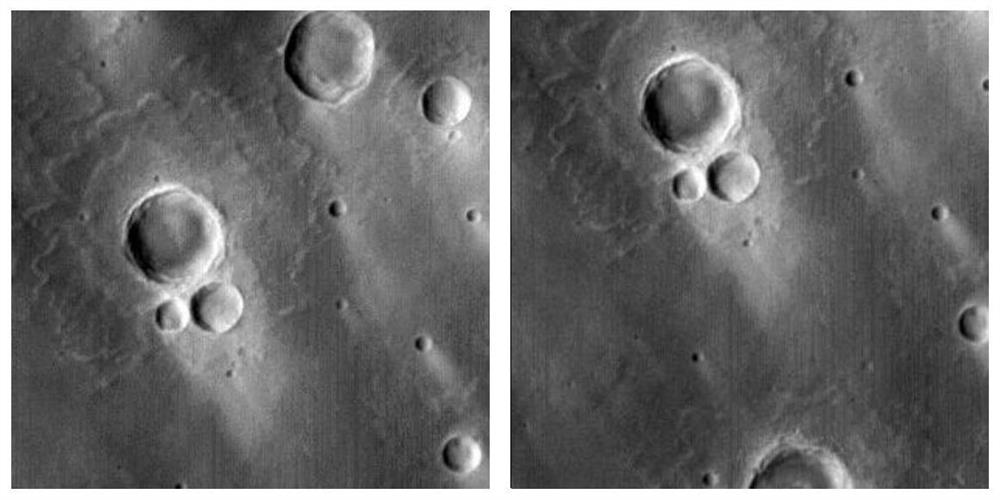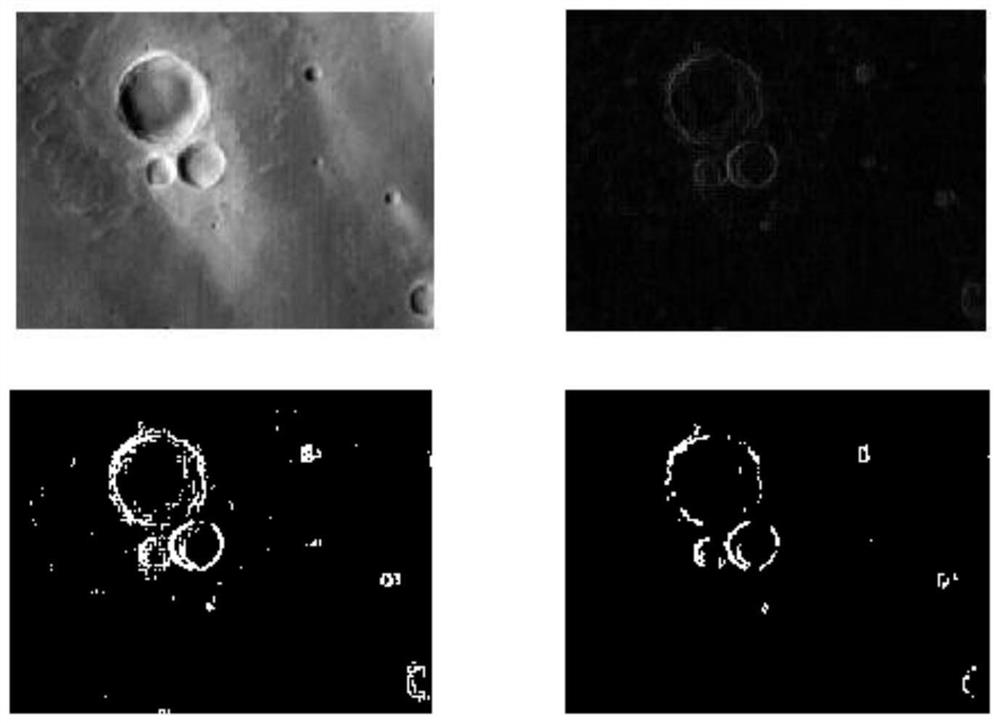Inertial navigation assisted meteorite crater coarse-to-fine detection method
A crater and precise detection technology, applied in the field of deep space exploration, can solve the problems of sequence image information redundancy, reduce calculation efficiency, etc., achieve accurate and safe landing, improve efficiency, and avoid the effects of redundant templates
- Summary
- Abstract
- Description
- Claims
- Application Information
AI Technical Summary
Problems solved by technology
Method used
Image
Examples
Embodiment Construction
[0087] In order to better illustrate the purpose and advantages of the present invention, the content of the present invention will be further described below with reference to the accompanying drawings and examples.
[0088] like Figure 7 As shown, the inertial navigation-assisted crater detection method disclosed in this example is from coarse to fine, and the specific steps are as follows:
[0089] Step 1: Based on the light and dark area information, the feature edge of the crater image is roughly extracted.
[0090] For a certain pixel (u, v), the region-based edge detection method selects an image window with a size of w × w centered on it, calculates the average gray value E(M) in the window, and finds the maximum gray value of the pixel in the window. The degree value max(M) and the minimum gray value min(M), and the difference between the gray mean value E(M) in the window and max(M) and min(M) respectively, and finally assign this value to the original image pixel...
PUM
 Login to View More
Login to View More Abstract
Description
Claims
Application Information
 Login to View More
Login to View More - R&D
- Intellectual Property
- Life Sciences
- Materials
- Tech Scout
- Unparalleled Data Quality
- Higher Quality Content
- 60% Fewer Hallucinations
Browse by: Latest US Patents, China's latest patents, Technical Efficacy Thesaurus, Application Domain, Technology Topic, Popular Technical Reports.
© 2025 PatSnap. All rights reserved.Legal|Privacy policy|Modern Slavery Act Transparency Statement|Sitemap|About US| Contact US: help@patsnap.com



